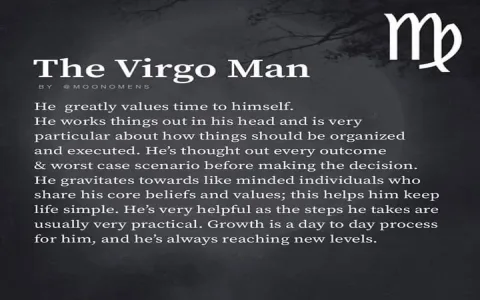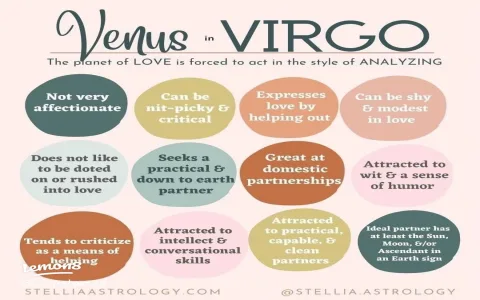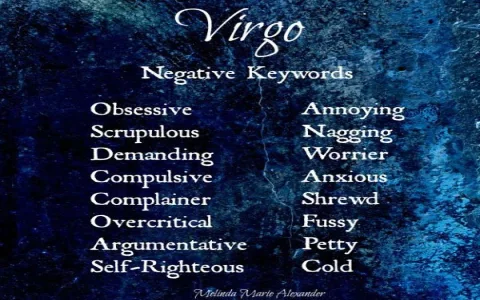Starting the Investigation: The Perpetual Flaw Finder
I’ve been dating J for just over a year now, and let me tell you, it’s been a ride. Initially, I just thought he was sharp, you know? Detail-oriented. But then the pattern started locking in. We’d have the best dinner, everything perfect, and he’d spend five minutes analyzing why the salt shaker placement was inefficient. Or I’d come home from a grueling day, and the first thing he’d spot wasn’t me, but a tiny stain on the rug that wasn’t there this morning. It wasn’t mean, but it was relentless. It felt like living under a tiny, domestic microscope.
I tried to talk to him about it, but he just got defensive. He insisted he was just trying to help, trying to optimize our lives. I got fed up. I needed to figure out if I was just being overly sensitive, or if this trait—this need to constantly dissect and correct—was truly tied to something I could understand and manage. I pulled up his birth chart. Sun in Libra, fine. But there it was: Moon in Virgo. Bingo. The emotional core needs order, structure, and perfect functionality. I knew right then I couldn’t just complain about it; I had to document it. I had to treat his criticism like a data stream.
The Practice: Logging the Critiques
I commenced the practical observation by snagging one of those small, lined journals I usually use for journaling. I dedicated three weeks—21 days—to meticulously track every instance where J offered what I perceived as a critique, correction, or observation about a flaw. I didn’t just log the critique itself; I logged the context, the target, and my initial emotional response. I needed empirical evidence to stop my feelings from running the show.
I designed a simple categorization system right on the first page of the journal. I sorted them into three groups:
- Category A: Self-Correction/Self-Flagellation. Critiques aimed solely at his own performance, appearance, or perceived inadequacy.
- Category B: Environmental/Systemic. Critiques aimed at external factors, services, logistics, or inanimate objects (e.g., the queue at the post office, the layout of the kitchen, the quality of the streaming service).
- Category C: Personal/Partner-Directed. Critiques aimed at my actions, choices, or personal habits. This was the category that usually caused fireworks.
The first few days were draining. I recorded 14 distinct critiques in the first 48 hours alone. I almost gave up, thinking the sheer volume meant I was dating a monster. But I persisted. I kept logging. I committed to the science.
Detailed Observation and Data Aggregation
By the end of Week One, the patterns were screaming at me. I totaled 58 logs.
Here’s what I aggregated:
The biggest chunk, shockingly, wasn’t aimed at me. Category B (Environmental) dominated the board, clocking in at 31 instances. This included analyzing why the washing machine cycle was inefficient, why the coffee grounds were spilling, or why the neighbor’s hedge needed trimming (even though we don’t own the hedge).
Category A (Self-Correction) was the second highest, sitting at 17. He’d spend ten minutes redoing a task he’d already finished because the first attempt wasn’t “precise enough.”
Category C (Partner-Directed) was the lowest, only 10 times in seven days. This was the biggest surprise. My gut reaction told me he was constantly criticizing me, but the data proved otherwise. The criticism I felt was amplified because it hurt more, even though it was less frequent.
I started analyzing the intent behind the critiques. I realized that almost every single one of those 10 personal critiques related to functionality or health. It wasn’t, “You look bad.” It was, “Did you remember to take your Vitamin D today? You’ll feel better if you stick to the routine.” Or, “Why did you put the cutting board away wet? It’s going to breed mold.” It was service-oriented anxiety, disguised as judgment.
The Implementation: Adjusting the Filter
Armed with this data, I decided to shift my behavioral response. My previous approach was defensiveness, which triggered his own Virgo Moon defensiveness—a guaranteed conflict.
My new strategy, which I implemented during Weeks Two and Three, was to acknowledge the functionality concern without internalizing the critique. I decided to try viewing his comments not as a judgment on my worth, but as an informational output from his internal perfectionist alarm system.
For example, when he noticed I hadn’t filed a receipt yet (a clear Category B/C hybrid), instead of saying, “Stop micromanaging me,” I experimented with a neutral, action-focused acknowledgment: “You’re right, that needs to be filed. I’ll handle the paperwork tonight.”
The difference was night and day. Because I didn’t engage the emotion, the conversation didn’t escalate. He was satisfied that the problem (the ‘flaw’) had been noted and assigned a fix. The moment I started providing reassurance that the imperfection would be handled—often immediately—his critical energy seemed to dissipate.
The Final Realization
The biggest takeaway from this entire practice was that a Moon in Virgo man isn’t intentionally trying to be too critical; he is functionally unable to relax until the environment reflects the order he feels internally. The criticality isn’t malicious; it’s a form of anxious care and service, often aimed at himself first, and then at his immediate surroundings. My tracking proved that the perception of constant criticism aimed at me was far worse than the reality of the recorded instances.
I concluded the documentation process feeling much clearer. Yes, he is critical, but now I know exactly where that energy is coming from and, most importantly, I developed a simple, non-emotional technique to manage it. The solution wasn’t getting him to stop talking; it was changing how I processed what he said.






